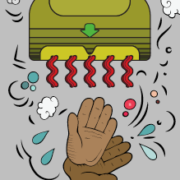5 Tips to Hear Better in Virtual Meetings + Gatherings
Working remotely with hearing loss can be a big challenge.
Whether you’re conducting business online or just want to virtually connect with family and friends, these listening strategies and tactics can go a long way toward helping you stay engaged.
- Explore the conferencing platform well before the online meeting or gathering — including reading a little about it or checking out a few quick instructional videos from other users — to build familiarity and confidence.
- Encourage everyone to use the video function — not just the audio option — to aid in lipreading and interpreting facial expressions. Also, try to keep your eye as much as possible on the person speaking rather than on your own camera image.
- Turn on the closed-captioning option, which can help take a big load off. In addition, consider using the real-time chat function, when available, to get clarification if you missed a point or have a follow-up question. Some video conferences may also be recorded for helpful playback later, so be sure to ask the host, who may need to initiate the recording option.
- Wear connected headphones if possible, which can make listening a whole lot easier. Quality headphones not only help block distracting background noise in your environment but can also improve reception of the audio’s full tonal range to make speech and other sounds more understandable.
- Stream directly to your hearing technology, if you wear hearing aids. Today’s sophisticated hearing instruments help make it a cinch to receive audio from various sources — phone, tablet, laptop, desktop computer, stereo, and more, depending on compatibility — directly to your ears, so be sure to take advantage of that functionality.
Want more virtual-communication tips? We can help with accessibility strategies and solutions that empower you in managing hearing loss and remote work. So don’t wait. Contact us today!




